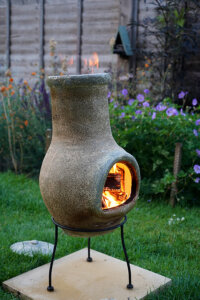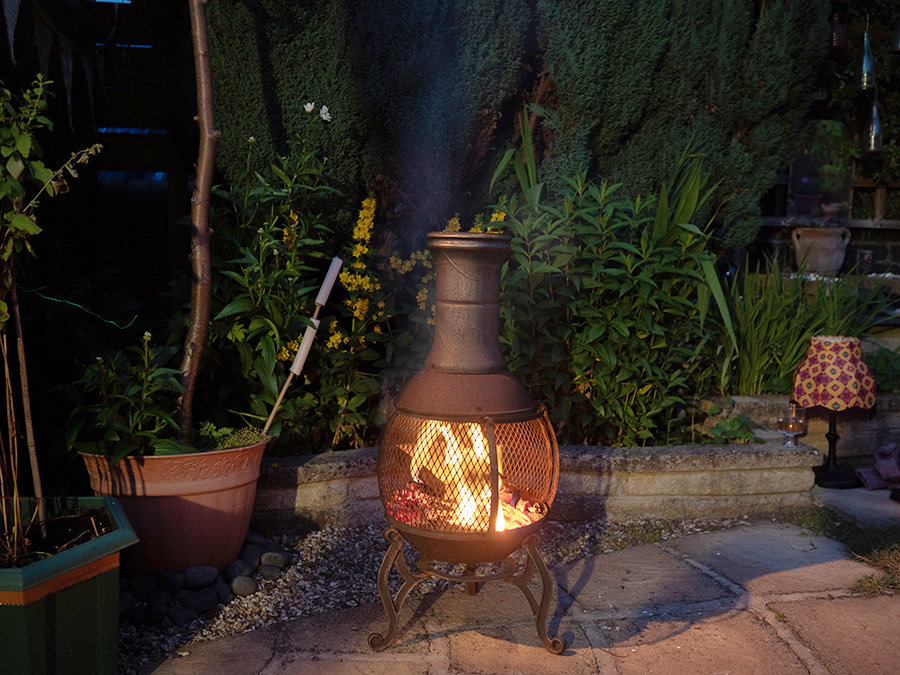It is hard to beat sitting outside on a crisp fall day with perfect temperatures, a bright blue sky, and vibrant foliage. The only thing that could make it better? The warm glow and the soft crackle of a chiminea burning aromatic wood.
Chimineas, traditionally a terracotta structure with an open mouth and tall “chimney” top, were used thousands of years ago in Mexico and Spain for heating and cooking. Today, homeowners love these frontloading wood-burning structures for their easy maintenance and safety. Chimineas offer a controlled burn thanks to an enclosed bowl and the chimney stack that guides flames up and out. Also, the design of a chiminea guarantees smoke won’t waft towards you as air is sucked in the mouth and pulled out of the smokestack. Many contemporary chimineas, such as seen above, feature a grill to avoid the possibility of sparks escaping when in use.
Preparing for your first fire
Once you’ve brought home your new chiminea, there are a few important steps to take to ensure a successful first fire. Be sure to find a level, solid surface to set the chiminea, and be mindful of what is above. Avoid enclosed porches, gazebos, low-hanging branches, awnings, or patio umbrellas. Kaylee Turner of Woodard Mercantile says one of the most common mistakes new chiminea owners make is not insulating the bottom. She suggests filling the bowl with sand, gravel, or pea stone until it sits three to four inches below the lower lip of the mouth. This material serves as a barrier between the clay and the fire.
Another essential step is seasoning the chiminea with small fires that burn out naturally. After about five small fires, your chiminea is prepared to handle larger fires. Wondering if your fire has gotten out of hand? If flames emerge from the top of the chiminea, your fire is too big. Lighter fluid should never be used when starting the fire, as the clay can absorb the liquid.

Selecting the wood
One of the greatest joys of a chiminea is enjoying the aromas of the wood. Due to the smaller size, you will want to buy pre-cut chiminea wood or cut-down logs used for your fireplace. It is important to burn non-treated dry wood. Common choices are fragrant woods such as apple, cedar, mesquite, hickory, and the most popular, pinion wood. Pinion, a pine native to the Southwest, produces a wonderful spicy scent that also wards off insects.
Care and maintenance
A huge benefit of using a chiminea is its easy care and maintenance. Thanks to the design, they are basically self-cleaning as ashes filter into the pea gravel, and a strong breeze will whip the remaining ashes up and out of the neck. With Kansas winters, clay chimineas run the risk of cracking in freezing temperatures and should be stored inside a garage or shed, or can be covered with a canvas cover or a heavy-duty trash bag.—By Sasha Kuchinski
